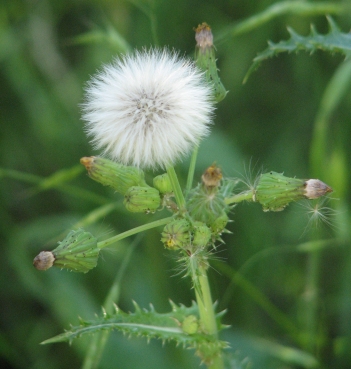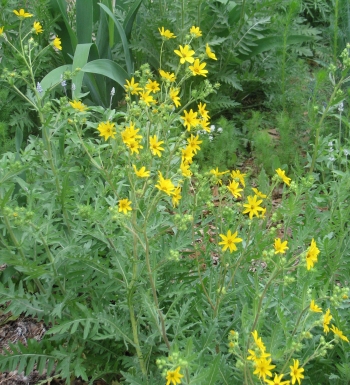Bermuda Grass; Cynodon dactylon; going by any number of names, some of them repeatable, Bermuda Grass is an invasive that is as difficult to grow as it is to eradicate. It is marked by a sprawling, low growing mass of tough rhizomes with densely spaced thin, short leaves, and short flower spikes with a single joint, that divides into 4 sprigs of tiny flowers. Originally from somewhere in Africa, it is drought resistant, has a deep, dense root system, and wears well, taking over many places, such as Bermuda, from whence it was brought to the USA. Favored for ball fields, it provides a dense sod if watered consistently, but goes dormant in the winter, turning brown and quickly wearing down to the rhizomes. It transplants as easily from rhizomes, so must be disposed of properly if it is unwanted. It does not tolerate shade, so is not a good choice for lawns with trees.

Bermuda Grass habit; a low growing grass marked by spreading rhizomes lined with thin, short, pointed leaves, nodes that take root where they touch the ground, and short flower spikes that branch into four flower bearing sprigs.
Note; the four identical sprigs on each flower spike, lined with tiny flowers

Note; the creeping radial pattern, rhizomes taking root wherever they touch soil, quickly growing over exposed soil

























